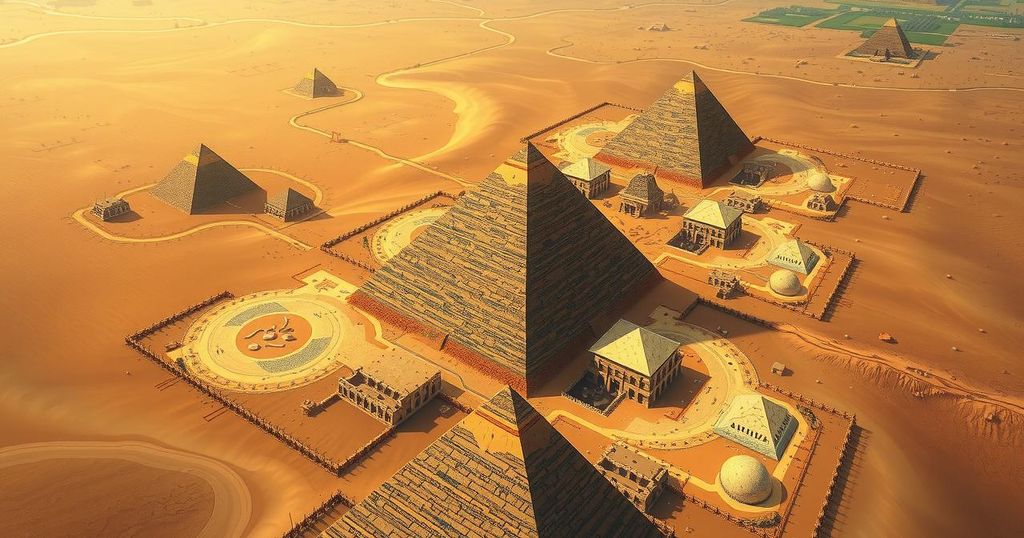Cars
AFRICA, ARCHAEOLOGY, CHRISTOPHER DUNN, CO, CORRADO MALANGA, EGYPT, ENVIRONMENTAL IMPACT, FILIPPO BIONDI, GIZA, GIZA PLATEAU, GIZA POWER PLANT, KHAFR, KHAFRE, KHAFRE PYRAMID, NEWS18, NIKOLA TESLA, POWER GRIDS, PYRAMID, PYRAMIDS OF GIZA, REESE, RESEARCH, ROMAN EMPIRE, SCIENCE, TECHNOLOGY, TESLA, UNIVERSITY OF PISA, UNIVERSITY OF STRATH, UNIVERSITY OF STRATHCLYDE
Michael Grant
0 Comments
Radar Scans Uncover Vast Underground Structures Beneath Giza Pyramids
Recent radar scans reveal a complex underground network beneath the Pyramids of Giza, suggesting they may have served functions beyond tombs, challenging traditional archaeological interpretations. Notable theories regarding their purpose involve energy collection and mechanical functions, drawing connections to figures like Nikola Tesla. The Khafre Project team seeks further investigation, but approvals remain uncertain due to historical restrictions.
Recent radar scans have unveiled a substantial underground complex beneath the Pyramids of Giza, posing challenges to the conventional understanding that these structures served merely as Pharaohs’ tombs. Researchers Corrado Malanga from the University of Pisa and Filippo Biondi from the University of Strathclyde employed Synthetic Aperture Radar (SAR) tomography, revealing an intricate subterranean system extending approximately two kilometers beneath all three pyramids.
Among the findings, scanners detected five identical structures positioned near the Khafre Pyramid, the second-largest on the Giza Plateau. These structures feature several levels interconnected by geometric pathways. Beneath these pathways lie eight vertical cylindrical wells surrounded by descending spiral routes that descend nearly 648 meters, converging into two massive cube-shaped edifices, each approximately 80 meters per side.
A video from the Reese Report highlights that these findings may contest the traditional view of the pyramids solely as burial sites. Researchers speculate the underground network could have served mechanical or energy-related functions, echoing theories proposed by notable figures like Nikola Tesla and Christopher Dunn. Tesla theorized that the pyramids could harness Earth’s natural energy, while Dunn, in his work “The Giza Power Plant,” inferred that the Great Pyramid might have acted as a machine transforming vibrations into usable energy.
While mainstream Egyptologists assert that the pyramids were constructed around 2500 BCE through conventional means, recent discoveries and mathematical anomalies in the construction methods have sparked renewed debate regarding the real purpose of the pyramids. The Khafre Project team has indicated a desire to conduct excavations to further explore these structures; however, acquiring the necessary permissions poses a challenge, as Egypt typically restricts digs that could undermine established narratives about the pyramids.
The advanced radar scans revealing an extensive underground structure beneath the Pyramids of Giza challenge historic notions regarding their function. Discrepancies in their purported purpose raise critical questions about ancient engineering and energy utilization. While further investigation is needed to substantiate these findings, the implications could significantly alter our understanding of these monumental edifices.
Original Source: www.news18.com




Post Comment